This set of Electrical Machines Question Bank focuses on “Operating Characteristics of Alternators and their Ratings”.
1. A 315V, 3-phase 400 MVA alternator is running at no load at constant excitations. The most appropriate representation in space domain is?
a) 
b) 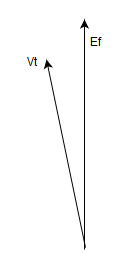
c) 
d) 
View Answer
Explanation: At no load Ia = 0. So Ef = Vt.
2. A 315V, 3-phase 400 MVA alternator is running at lagging power factor at constant excitations. The most appropriate representation in space domain is?
a) 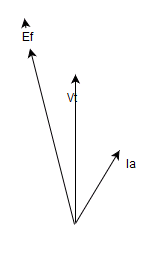
b) 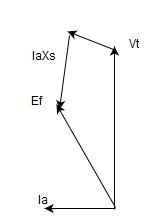
c) 
d) 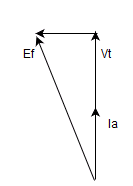
View Answer
Explanation: Ia should lag Ef.
3. A 315V, 3-phase 400 MVA alternator is running at leading power factor load at constant excitations. The most appropriate representation in space domain is?
a) 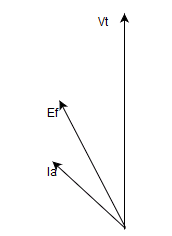
b) 
c) 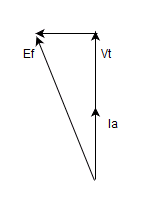
d) 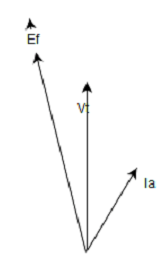
View Answer
Explanation: Ia will lead the excitation.
4. A 315V, 3-phase 400 MVA alternator is running at unity power factor at constant excitations. The most appropriate representation in space domain is?
a) 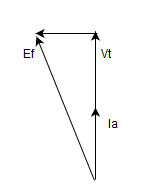
b) 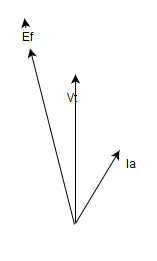
c) 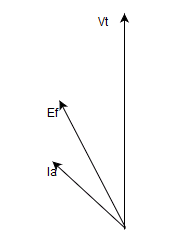
d) 
View Answer
Explanation: Ia in phase with excitation voltage.
5. A 315V, 3-phase 400 MVA alternator is running at zero power factor lagging at constant excitations. The most appropriate representation in space domain is?
a) 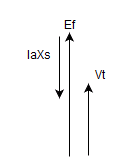
b) 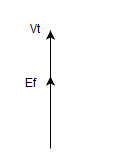
c) 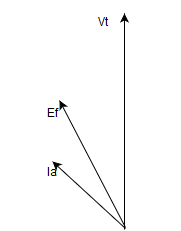
d) 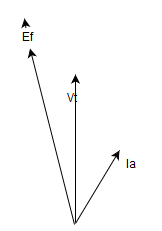
View Answer
Explanation: Ia has to be lagging by 90°.
6. A 315V, 3-phase 400 MVA alternator is running at zero power factor leading at constant excitations. The most appropriate representaion in space domian is?
a) 
b) 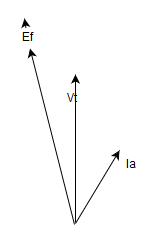
c) 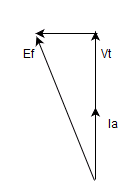
d) none of the mentioned
View Answer
Explanation: Ia has to be leading by 90°.
7. With the alternator running at rated terminal voltage Vt, at rated current Ia = 1 per unit. What happens if load current is reduced to zero, if it was operating at lagging power factor?
a) 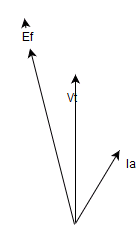
b) 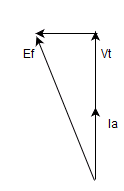
c) 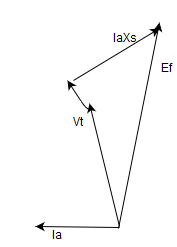
d) 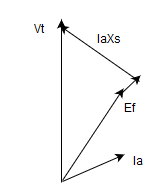
View Answer
Explanation: Check for the Ia lagging Ef and Ef > Vt.
8. With the alternator running at rated terminal voltage Vt, at rated current Ia = 1 per unit. What happens if load current is reduced to zero, if it was operating at leading power factor?
a) 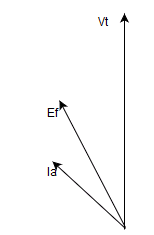
b) 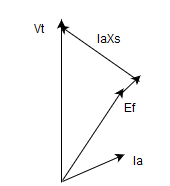
c) 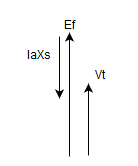
d) 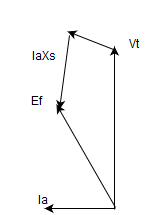
View Answer
Explanation: Check for the Ia leading Ef and Ef < Vt.
9. If the machine was operating at upf, then the new excitation voltage will be _________
a) greater than 1 pu
b) less than 1 pu
c) 1 pu
d) zero
View Answer
Explanation: The new excitation will be more than 1 pu to compensate for the flux required.
10. The variation of Vt vs Ia is for the alternator is given below.
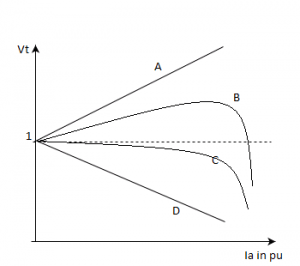
Choose the appropriate
a) A-zpf lead; B-0.8 lead; C-0.8 lag; D-zpf lag
b) A-zpf lag; B-0.8 lead; C-0.8 lag; D-zpf lead
c) A-zpf lead; B-0.8 lag; C-0.8 lead; D-zpf lag
d) A-zpf lead; B-0.8 lag; C-0.8 lead; D-zpf lag
View Answer
Explanation: A is zpf lead for the alternator and D will be zpf lag.
11. Mark the plot for terminal voltage vs armature current for the alternator.
a) 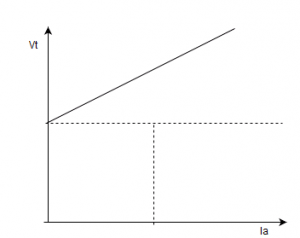
b) 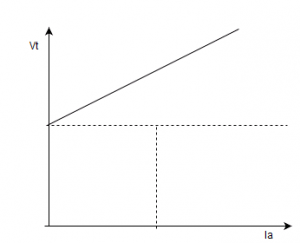
c) 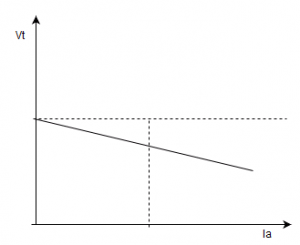
d) 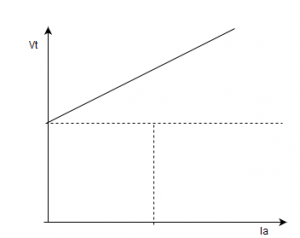
View Answer
Explanation: After the maximum excitation the alternator will have a fall out if the excitation is increased beyond synchronous speed.
12. Alternator compounding characteristic is obtained by _________
a) keeping Vt constant
b) keeping Ef constant
c) keeping Ia constant
d) varying Vt
View Answer
Explanation: Alternator compounding characteristic is obtained by keeping Vt constant.
13. At zpf lag, the excitation should be increased in order to maintain the armature terminal voltage constant.
a) True
b) False
View Answer
Explanation: Due to demagnetizing armature reaction at zpf lag in an alternator.
14. The rating of the alternator is decided by _________
a) losses
b) voltage
c) armature current
d) temperature
View Answer
Explanation: The losses determine the rating to be used for alternator.
15. The core losses in synchronous machine is _______ dependent.
a) voltage
b) current
c) temperature
d) insulation
View Answer
Explanation: Core losses depend on the voltage applied to the machine.
Sanfoundry Global Education & Learning Series – Electrical Machines.
To practice Electrical Machines Question Bank, here is complete set of 1000+ Multiple Choice Questions and Answers.
If you find a mistake in question / option / answer, kindly take a screenshot and email to [email protected]
